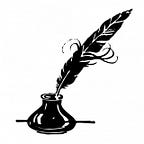Flame of the Forest
A feather of an eagle dipped in Soma, the elixir of the Gods, falls to earth and from it springs a tree with magical properties — the Flame of the Forest.
The Flame of the Forest (Butea monosperma), found extensively in Kabini, is native to India and is usually between twenty to forty feet in height. Characterized by its crooked trunk and twisted and irregular branches, it is not the most endearing of sights. Come January and it bursts forth with a riot of orange and vermilion flowers that covers its entire crown. In its dry deciduous forest home, it looks like it’s on fire and It should therefore come as no surprise that it is considered to be a form of Agni — the God of Fire.
Closely associated with Hinduism, its tri-foliate leaves are said to represent the Hindu Holy Trinity of Brahma, Vishnu and Shiva. Its leaves are used in various religious ceremonies such as the blessing of calves to ensure that they yield good milk. The wood of the tree is considered sacrificial and its dry twigs are used in the sacred fire or Homa. The wood is also used to make utensils that are used in religious functions such as the ladle that is used to pour Ghee into the sacred flame. The staff that is placed in the hand of a Brahmin boy at the time of his thread ceremony is also made from the wood of the Flame of the Forest. When he renounces the world to become a Sadhu, he is made to either eat a leaf of the tree or to eat off a plate made from its leaves.
The flowers of the Flame of the Forest are used to make a dye which is used during the festival of Holi. As red is the colour of passion, a young man smearing a woman’s face with the dye has powerful erotic significance. In Indian poetry the flowers are compared to the new nail marks on the body of the beloved while Amir Khusru, the Sufi Saint, compares the flowers of the tree to a lion’s claw stained with blood.
In the real world, the tree is considered a medicinal plant as it balances Vata and Pitta. It is used extensively in Ayurveda, Unani and Homeopathy. Extracts from various parts of the tree possess a host of properties including anti-microbial, anti-bacterial, anti-fungal, anti-inflammatory, astringent, tonic, aphrodisiac and diuretic properties.
In the dry deciduous forests of India, it is a vital lifeline for a large number of species as it is one of the few trees that flower during the dry season when food is scarce, making it truly a gift from the Gods.
